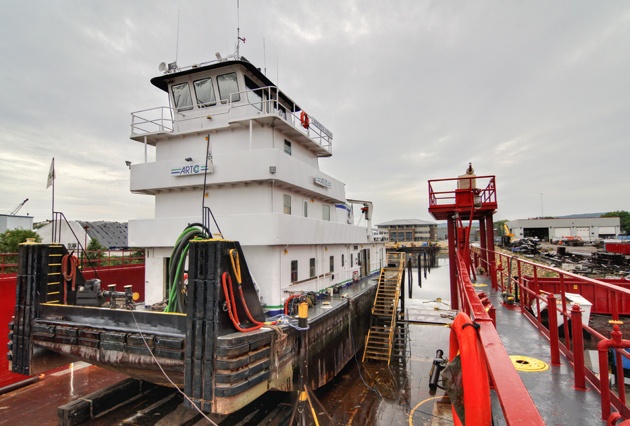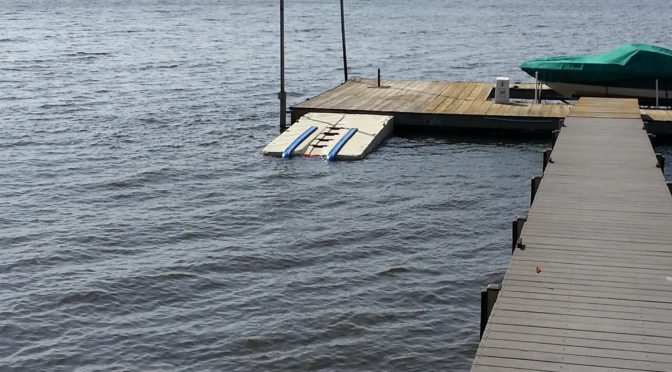Typical Problems That Result In Costly Dock Repairs
Typical Problems That Result In Costly Dock Repairs
Blog Article
Reliable Dock Fixing Techniques: Ensuring Architectural Honesty
Making certain the architectural stability of anchors with effective repair work techniques is paramount for the longevity and safety and security of aquatic facilities. This includes a multi-faceted method starting with extensive evaluations making use of innovative modern technologies like finder devices and remotely operated lorries (ROVs) to identify both noticeable and concealed damages. Ultimately, choosing the best repair products, such as corrosion-resistant alloys and composite products, is essential for durability. Architectural reinforcement methods, consisting of the application of cross-bracing systems and load-distribution plates, play a vital duty in mitigating anxiety points. Nonetheless, the importance of these techniques comes to be apparent when discovering sophisticated repair approaches and preventative maintenance approaches.
Analyzing Dock Damage
Examining dock damages is a crucial very first action in ensuring the structural stability and safety and security of any docking facility. This preliminary examination entails a comprehensive assessment to recognize both covert and noticeable problems. Trick facets to examine include the dock's foundation, pilings, decking, and hardware. Each element needs to be looked at for indicators of wear, rot, deterioration, or various other kinds of degradation that could compromise the structural integrity.
Architectural designers or qualified examiners usually carry out these evaluations utilizing specialized tools and techniques. Underwater inspections could employ finder devices or from another location ran automobiles (ROVs) to detect submerged damage. Above water, aesthetic evaluations are enhanced by using moisture meters and various other analysis tools to reveal underlying problems not right away visible to the nude eye.

Finding Repair Materials
Choosing the proper repair service products is a crucial action in the dock restoration process, one that directly influences the durability and performance of the repaired structure. Material selection should be driven by aspects such as ecological problems, load-bearing demands, and compatibility with existing dock elements. For circumstances, timber is a standard option for anchors because of its natural durability and aesthetic appeal. Nonetheless, picking the appropriate sort of wood, such as pressure-treated lumber or naturally rot-resistant species like cedar or teak wood, is critical to hold up against marine atmospheres.
In enhancement to wood, composite products are progressively popular as a result of their sturdiness and reduced maintenance needs. Composites, typically made from a blend of plastic and timber fibers, use superb resistance to rot, insects, and UV damages. For metal anchors, selecting corrosion-resistant alloys such as galvanized steel or marine-grade light weight aluminum is important to protect against corrosion and ensure architectural integrity in saline water conditions.
Epoxy resins and marine-grade sealers are essential for fixing splits and sealing joints, offering a water-proof barrier and improving the dock's general toughness. By meticulously choosing high-grade materials, dock repair work can accomplish durable results, thus protecting versus future destruction and ensuring safe, reputable usage.
Architectural Support Strategies
Effective structural reinforcement techniques are vital in making sure the security and durability of dock repair services. One essential approach entails using steel or composite support bars (rebar) within concrete frameworks. Rebar gives added tensile toughness, protecting against splits and dispersing lots extra equally. This approach is specifically reliable for anchors subjected to heavy lots or rough ecological problems.
One more important technique is the application of fiber-reinforced polymers (FRP) These products use high strength-to-weight ratios and excellent resistance to deterioration, making them suitable for strengthening concrete or wood anchors. FRP can be applied in strips or sheets and adhered with epoxy resins to enhance architectural stability.
Bracing and securing systems likewise play a vital role in architectural reinforcement. Cross-bracing, using steel or wooden light beams, can combat side forces, reducing guiding and motion. Securing systems, such as helical piers or driven stacks, provide a steady foundation by moving loads to much deeper, more secure soil layers.
Last but not least, the integration of load-distribution plates can aid distribute weight extra uniformly throughout the dock's surface, minimizing localized stress and anxiety points. These strategies collectively make sure that anchors stay durable and safe, capable of holding imp source up against the rigors of their functional environment.
Advanced Repair Work Approaches

One more advanced technique involves undersea welding, which enables repair work to be carried out without the requirement to dewater the area. This method is pop over here particularly beneficial for dealing with structural issues in submerged dock components, ensuring minimal disturbance to procedures. Improved welding methods, combined with robotic systems, deliver accuracy and integrity, consequently prolonging the life expectancy of the dock.
Additionally, cathodic protection systems are applied to avoid deterioration in metallic dock structures. By utilizing sacrificial anodes or satisfied present systems, these techniques effectively minimize the electrochemical procedures that result in material damage.
Finally, advanced surveillance innovations, such as structural wellness tracking (SHM) systems, offer real-time information on the problem of dock structures. These systems make it possible for positive upkeep and timely interventions, eventually guaranteeing the lasting structural honesty of the dock.
Maintenance and Avoidance
Maintenance and avoidance are essential concepts that underpin the durability and safety of dock frameworks. Regular assessments are paramount, permitting early discovery of wear and tear, prospective weak points, and environmental influences. A positive strategy, involving regular checks for rust, rot, and architectural shifts, minimizes costly repair services and prolongs the dock's operational life.
Safety nets need to include using safety finishings to steel components to safeguard versus rust and utilizing cured timber to resist decay. Furthermore, making certain proper drain and air flow can protect against water accumulation, which is a typical root cause of architectural degradation. Integrating high quality products and sticking to manufacturer guidelines during building and repair service stages additionally play crucial functions in improving longevity.

Training personnel in dock upkeep ideal methods makes sure constant application of preventive measures. Leveraging technical developments, such as drones for assessments and sensors for real-time monitoring, can better improve maintenance efforts. By focusing on maintenance and prevention, dock proprietors can make sure structural integrity, functional safety and security, and economical management over the dock's life-span.
Final Thought
To conclude, maintaining the architectural stability of marine facilities demands detailed dock repair strategies. Extensive evaluations utilizing sophisticated devices uncover both visible and hid damages, while the check that choice of ideal fixing products enhances durability. Executing structural support techniques addresses stress factors effectively. Advanced fixing techniques, combined with routine upkeep practices, make certain the dock remains risk-free and operational under diverse environmental problems. Taking on these techniques dramatically prolongs the life expectancy and capability of aquatic infrastructure.
Making certain the architectural integrity of docks through effective repair work methods is extremely important for the long life and safety of marine centers.Selecting the appropriate repair materials is a pivotal step in the dock restoration process, one that directly influences the long life and efficiency of the fixed framework.Efficient structural reinforcement techniques are crucial in guaranteeing the stability and longevity of dock repairs. By focusing on upkeep and avoidance, dock owners can guarantee structural integrity, functional security, and economical administration over the dock's lifespan.
In conclusion, keeping the architectural stability of marine centers requires detailed dock repair work techniques.
Report this page